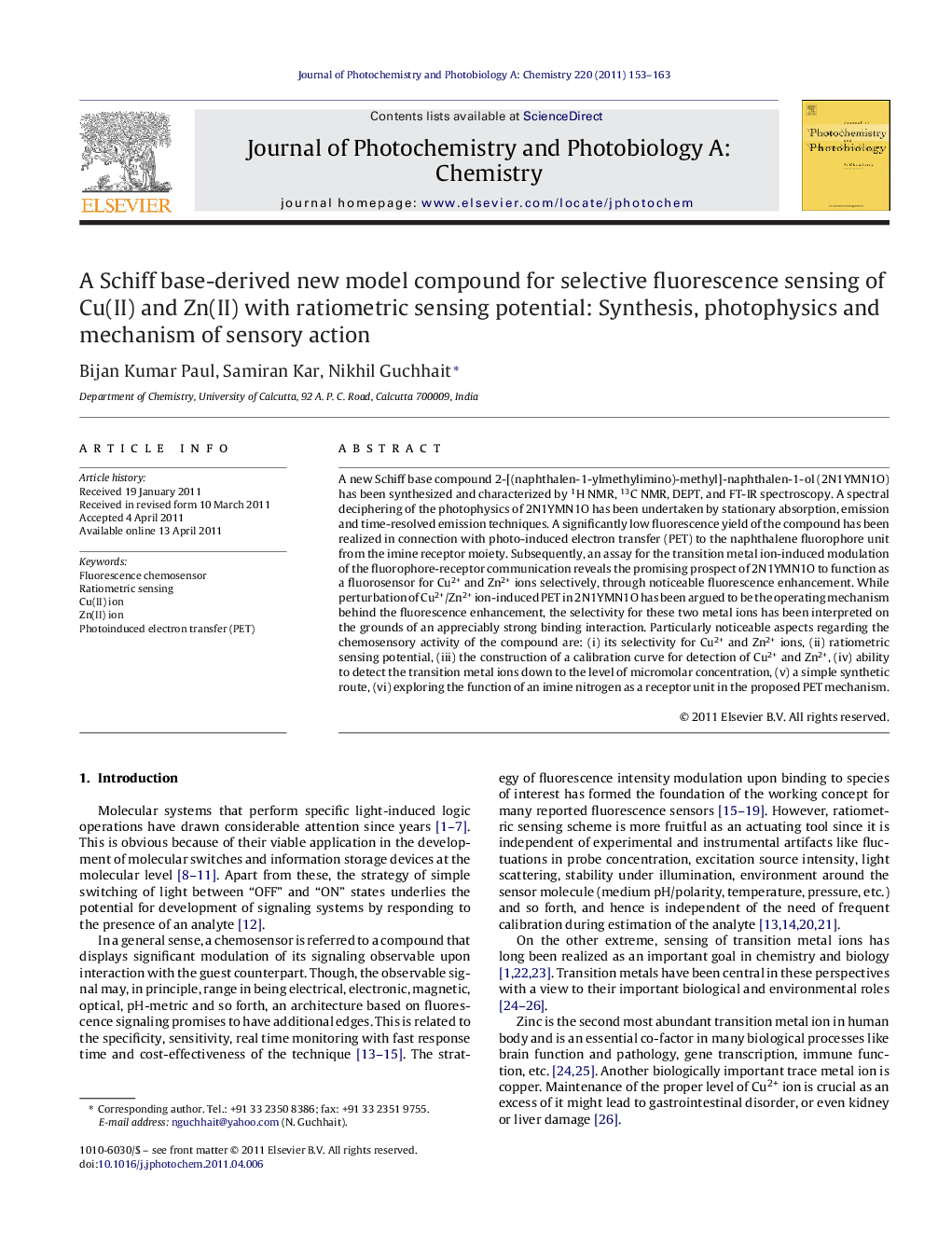| Article ID | Journal | Published Year | Pages | File Type |
|---|---|---|---|---|
| 28767 | Journal of Photochemistry and Photobiology A: Chemistry | 2011 | 11 Pages |
A new Schiff base compound 2-[(naphthalen-1-ylmethylimino)-methyl]-naphthalen-1-ol (2N1YMN1O) has been synthesized and characterized by 1H NMR, 13C NMR, DEPT, and FT-IR spectroscopy. A spectral deciphering of the photophysics of 2N1YMN1O has been undertaken by stationary absorption, emission and time-resolved emission techniques. A significantly low fluorescence yield of the compound has been realized in connection with photo-induced electron transfer (PET) to the naphthalene fluorophore unit from the imine receptor moiety. Subsequently, an assay for the transition metal ion-induced modulation of the fluorophore-receptor communication reveals the promising prospect of 2N1YMN1O to function as a fluorosensor for Cu2+ and Zn2+ ions selectively, through noticeable fluorescence enhancement. While perturbation of Cu2+/Zn2+ ion-induced PET in 2N1YMN1O has been argued to be the operating mechanism behind the fluorescence enhancement, the selectivity for these two metal ions has been interpreted on the grounds of an appreciably strong binding interaction. Particularly noticeable aspects regarding the chemosensory activity of the compound are: (i) its selectivity for Cu2+ and Zn2+ ions, (ii) ratiometric sensing potential, (iii) the construction of a calibration curve for detection of Cu2+ and Zn2+, (iv) ability to detect the transition metal ions down to the level of micromolar concentration, (v) a simple synthetic route, (vi) exploring the function of an imine nitrogen as a receptor unit in the proposed PET mechanism.
► Ratiometric sensing potential of synthetic Schiff base-derived compound. ► Selective fluorescence sensing of Cu(II) and Zn(II) ions. ► Transition metal ion induced fluorescence enhancement by photoinduced electron transfer (PET) process.
